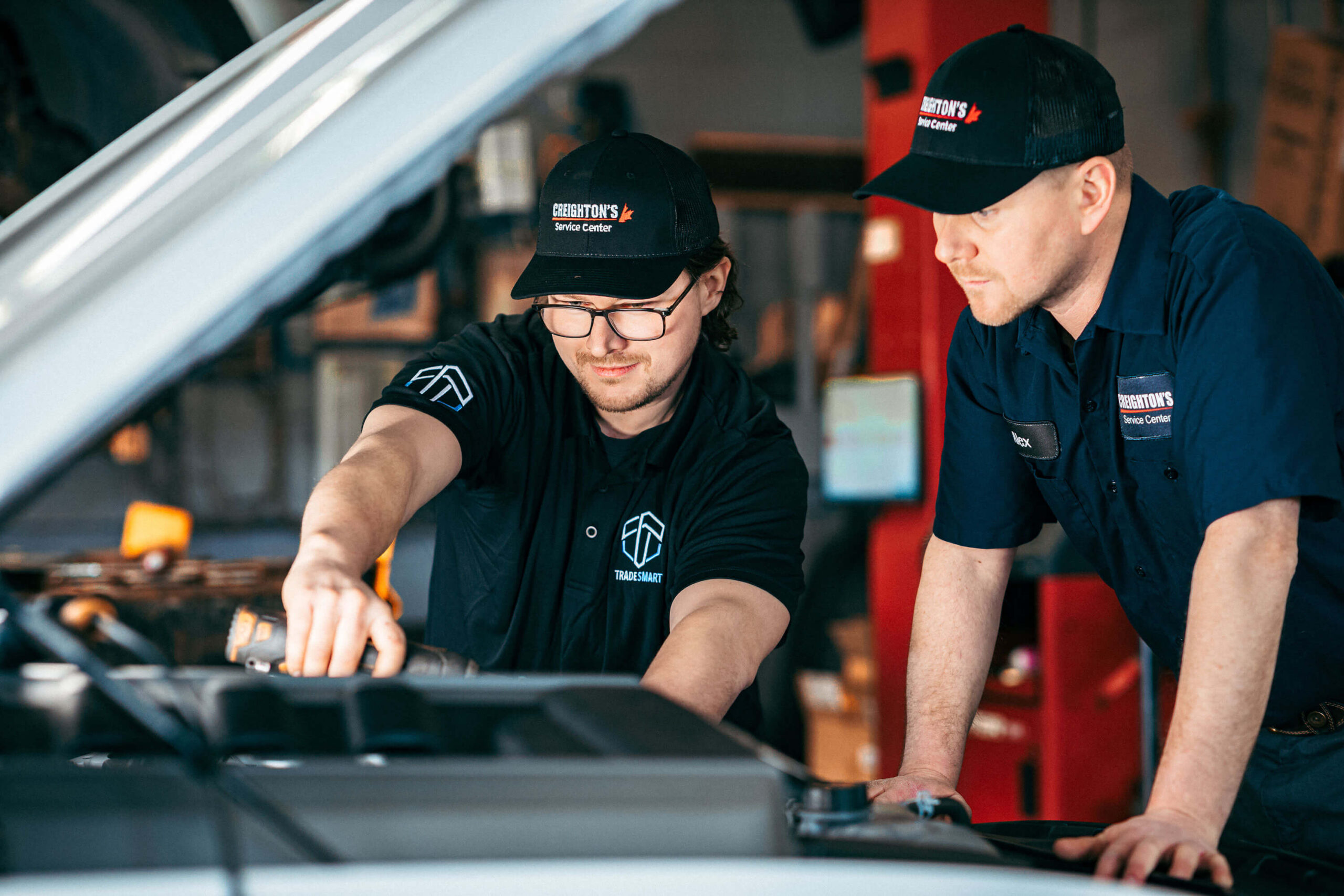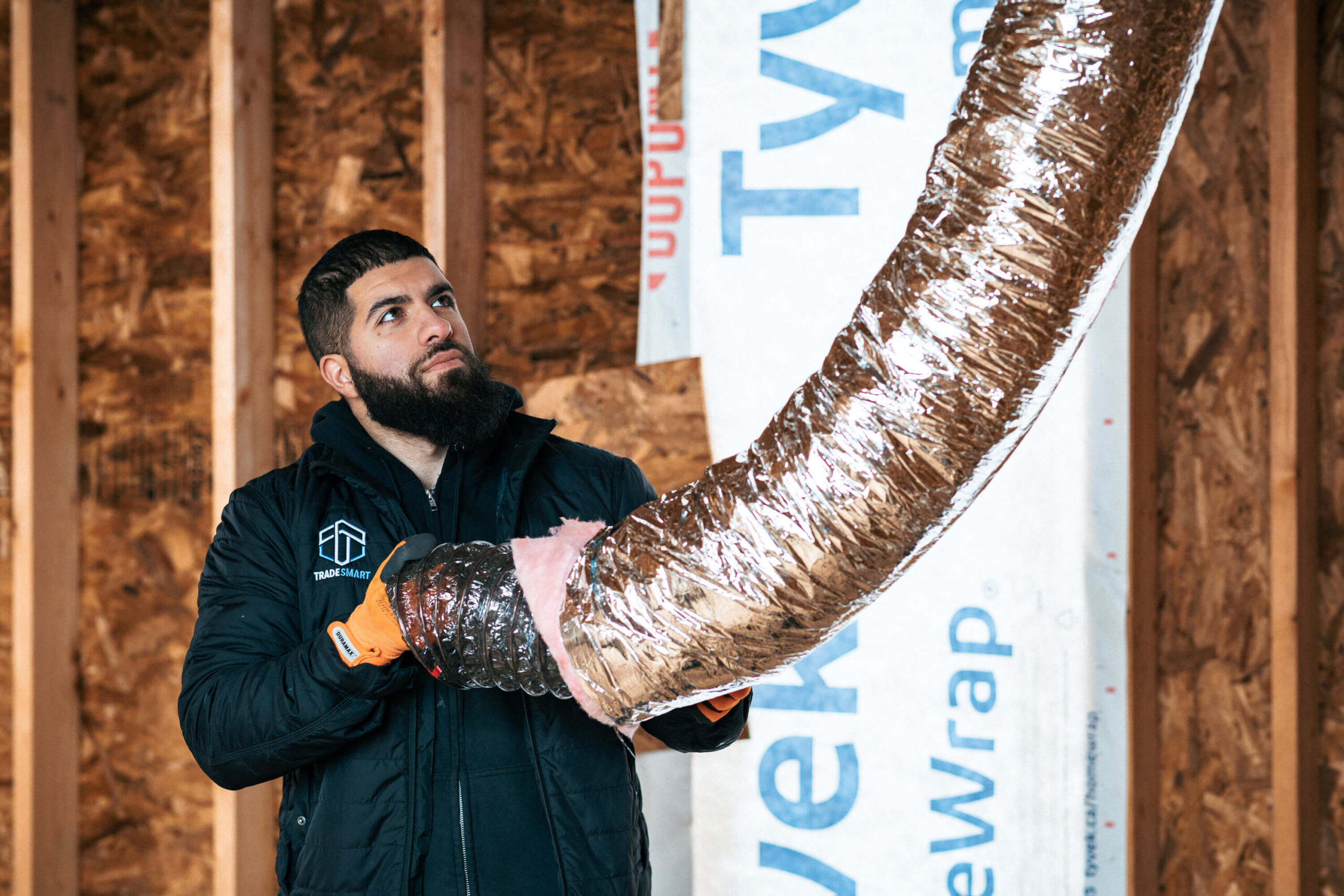
We Need More People in the Skilled Trades
We Need More People in the Skilled Trades For decades, we’ve been hearing about the shortage of people entering the skilled trades, and it seems like the problem is getting worse, not better.

Women make up nearly half the workforce, yet in some of the highest-paying skilled trades, they barely register as a statistical blip. In fields like construction, motive power, and industrial trades, the proportion of women is often less than 1%. This gender disparity isn’t just a quirk of the labor market—it’s a systemic issue that limits access to lucrative, stable careers.
At Trade Smart College, we see firsthand how these high-paying fields remain overwhelmingly male-dominated, and we’re committed to preparing all students—regardless of gender—to be focused, reliable, efficient, and adaptable professionals. But the question remains: why are so few women entering these trades, and what can be done to change that?
The Gender Divide in Skilled Trades
A quick glance at the Skilled Trades Ontario trade reports reveals a stark gender gap across different trade sectors. In service trades, such as cooking, women make up a more substantial share of the workforce—36% of cooks are female. However, when we move into higher-paying trades, female representation plummets.
In construction, motive power, and industrial trades, the percentage of women often falls below 1%. For instance, among plumbers (306A), general carpenters (403A), and refrigeration and air conditioning mechanics (313A), female participation is negligible. Motive power trades, such as truck and coach technicians (310T), also report similarly low numbers. Despite industry-wide efforts to promote gender diversity, these fields remain largely inaccessible to women.
Two Common Barriers to Women in Trades
One of the most commonly cited reasons for the lack of women in high-paying trades is deeply ingrained gender stereotypes. Many people still associate physically demanding, hands-on jobs with men, while steering women toward careers in education, healthcare, or office work. These stereotypes start early, shaping the expectations of teachers, parents, and even young girls themselves. As a result, many women never even consider the trades as a viable career option.
Another significant barrier is the lack of female role models in these fields. When young women don’t see anyone who looks like them in an industry, it’s harder to imagine themselves succeeding in it. Without visible examples of female tradespeople thriving, it becomes easy to assume that these jobs simply aren’t for them. This lack of representation reinforces itself, making it difficult for industries to attract more women and break the cycle.
Two Overlooked Challenges That Keep Women Out
Beyond stereotypes and representation, there are other, less-discussed factors that create barriers for women in skilled trades. One major issue is the design of personal protective equipment (PPE). Most PPE—such as work gloves, boots, and harnesses—is designed for male body proportions. When women are forced to wear gear that doesn’t fit properly, it can be uncomfortable at best and unsafe at worst. This seemingly small issue can contribute to making the workplace feel unwelcoming or even hazardous. Companies like the Dirty Seahorse are starting to make a dent in this problem, but there is lots more to be done.
Another overlooked factor is the networking culture in the trades. Many high-paying trades operate on informal hiring practices, where apprenticeships and job opportunities are passed along through personal connections. These tight-knit networks often exclude women, who don’t have the same built-in access to trade-based social circles. This makes it harder for them to get hired, find mentors, and advance in their careers.
What Can Be Done to Close the Gap?
If we want to increase the number of women in high-paying trades, we need to take deliberate action. One of the most effective solutions is early exposure and outreach. Schools, training programs, and community organizations must actively promote trades as a viable career option for young women. This includes hands-on workshops, industry partnerships, and career counseling that encourages women to explore trade careers just as readily as any other profession. Luckily, there are also people like Lisa Hepfner, MP for Hamilton East around who spend a lot of their time trying to promote careers for women in the trades.
Additionally, mentorship programs can play a crucial role in breaking down barriers. When female students are paired with experienced tradeswomen, they gain insight, encouragement, and a support system that helps them navigate a male-dominated field. These mentorship opportunities can be instrumental in retaining women in the trades and helping them build successful careers. At our Women in the Trades Nights at the College, we heard from several women who spoke about the critical importance of having a mentor when they started out, and how they have tried to pass that along by becoming mentors themselves.
Key Takeaways
The Bottom Line
Building a More Inclusive Skilled Trades Workforce
The gender imbalance in high-paying trades is not an accident—it’s the result of systemic barriers that have gone unchallenged for too long. While progress is being made, more needs to be done to ensure that all qualified individuals, regardless of gender, can access these lucrative and fulfilling careers.
At Trade Smart College, we don’t just hand out diplomas—we create career-ready professionals by giving students 950 hours of real-world experience before they graduate. Women entering the trades don’t need special treatment—they need equal opportunity, proper training, and a clear path to success. The sooner we remove these unnecessary barriers, the sooner we’ll see a skilled trades workforce that truly reflects the talent available.

We Need More People in the Skilled Trades For decades, we’ve been hearing about the shortage of people entering the skilled trades, and it seems like the problem is getting worse, not better.

Your Chances of Getting an Apprenticeship: By the Numbers By any measure, Ontario is desperately short of skilled tradespeople. We need people now, but the first step in becoming a tradesperson is to

What’s the Highest Paying Trade in Ontario in 2024? Many of our prospective students ask some version of the question, “what is the highest paying trade in Ontario?” We understand the impulse behind

Need more info? Looking to register? Want to find out about financing or start dates? Book a call, meeting, or text chat with Carrie our Student Success Manager.